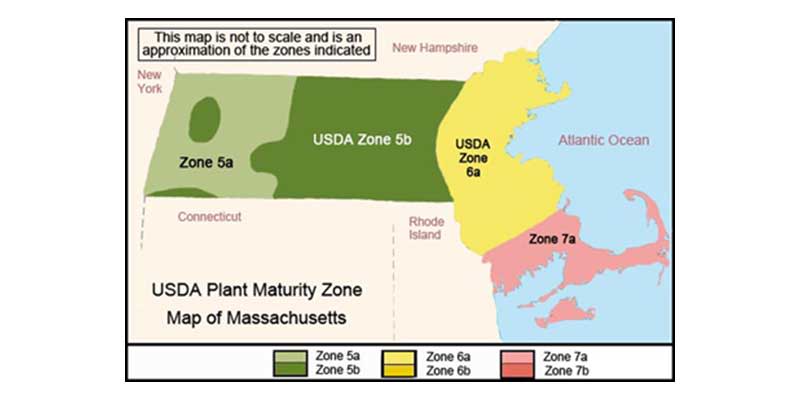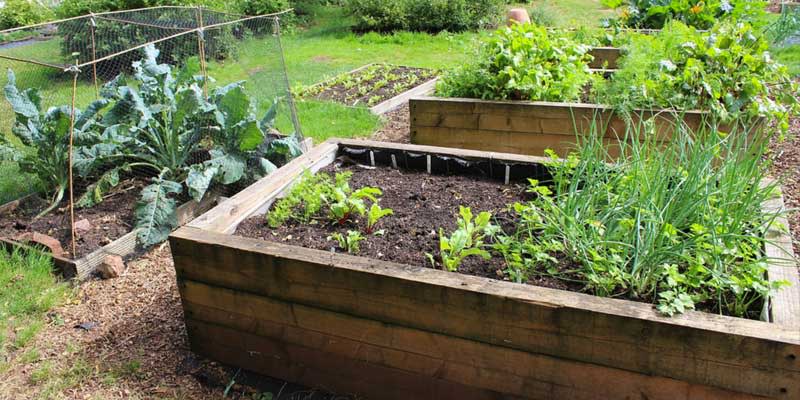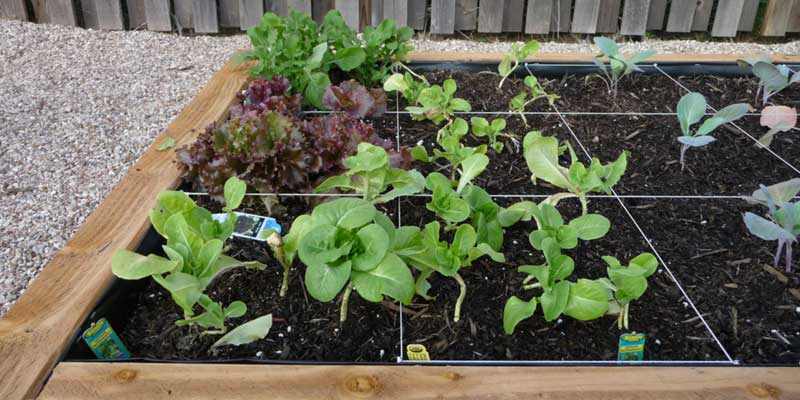
01. Know Your Growing Season
Every region has a zone that gardeners use as a guideline on when to plant certain types of vegetables. Warmer regions are going to have a different (and longer) growing season than colder climates; however, the most important thing to know is your first and last frost date.

What happens if you plant before the last frost date? If we get a frost, your vegetable seedlings may die. There are select plants that can survive a frost, but many tender plants like tomatoes, peppers, basil, and cucumbers will not survive. Frost hardy plants can be planted for an early spring or fall garden. These plants include lettuce, kale, broccoli, and peas.
You can start planning your garden with transplants from The Gardener's Spot or the Regional Environmental Plant Sale - both offering online ordering this season.
02. Raised Beds or Containers?

Do you have an area of your yard or deck that receives at least 6 hours of sunlight per day? Then you can start a raised bed or container garden to grow almost any veggie!
A raised bed garden can be as complicated as building your own beds out of cedar or as simple as constructing some squares with bricks! If you don’t have yard space, there are many vegetables you can grow just fine in containers. Just remember that you will need to water a container garden more than a raised bed garden. Always check the seed package to see if it's container garden appropriate.
Tip: When planning your raised bed garden, keep in mind that the north-facing part of your garden should contain the plants that grow tall (tomatoes, trellised cucumbers) and the south side should have your lower lying plants like herbs and lettuce. In most cases, you don’t want your taller plants shading out your shorter plants.

03. Preparing Your Soil
Soil is the key to delicious and healthy vegetables, so don't skip this step!
With raised beds and containers, you have more control over your soil quality because it’s all about what you put in it. Some experts suggest making a mix of ingredients of these ingredients which can be found at most gardening stores:
1. 1/3 coarse horticultural vermiculite, 1/3 peat moss, and 1/3 blended compost.
or
2. 50% screened topsoil and 50% high-quality compost.
A local store with staff on hand to help like Klem's in Spencer can be a one-stop-shop for all your gardening needs and questions. Klem's is currently offering curbside pickup.
04. Protecting Your Garden
If you’re starting a garden, most likely the goal is to feed yourself and not the entire neighborhood of furry friends!
You can build a simple chicken wire fence with stakes, cover your crops with row covers, or place bird netting over high stakes to keep out unwanted visitors.
05. Buying Your Transplants
Now for the fun part! Because the growing season in Central Massachusetts is relatively short, many gardeners buy transplants to get a head start on the growing season. This is by far the easiest way to get your garden started.
On May 16, The Regional Environmental Council (REC) hosts a massive Spring Garden Festival and Plant Sale that will have the transplants you need to start your garden. This year, you can pre-order online and pick your plants up on May 16.
Pick your favorite vegetables! It’s a good idea to start with a small variety and get to know how each plant grows. You can always expand your inventory for next year’s garden.

06. Planning
When planning your raised bed garden, we suggest the “square foot gardening” method. This simplifies the process by breaking your beds down into square foot areas. Each square foot gets a certain number of plants. For example, one tomato gets one square and you can plant 9 spinach plants in a single square.
In the image below, twine was used to mark each square foot. You can also use sticks to mark your squares. Some squares have multiple seedlings, and others have a single plant. Each variety of vegetable or herb will have its own guidelines.

07. Start Planting!
Once you bring your baby plants home, they need special care. If you’re not ready to plant yet, place them in a shady location outdoors, protected from pests.
The ideal time to plant your seedlings is on a calm cloudy day, or in the afternoon when the sun is not as hot. The day before you plan to plant, water the plants so that the soil is moist. Your garden soil must be moist as well, but not too wet. If it’s muddy then it’s too wet to plant so wait for a drier day.